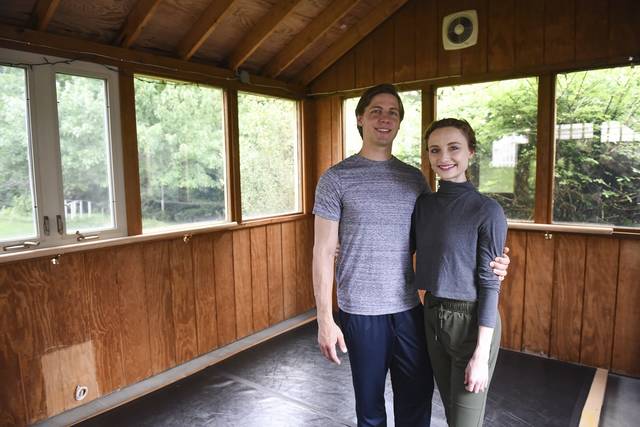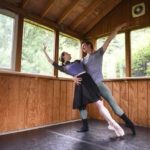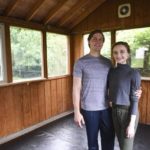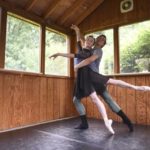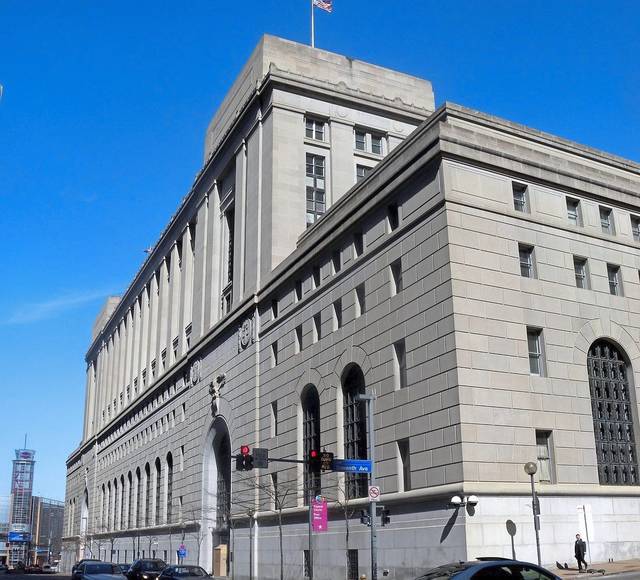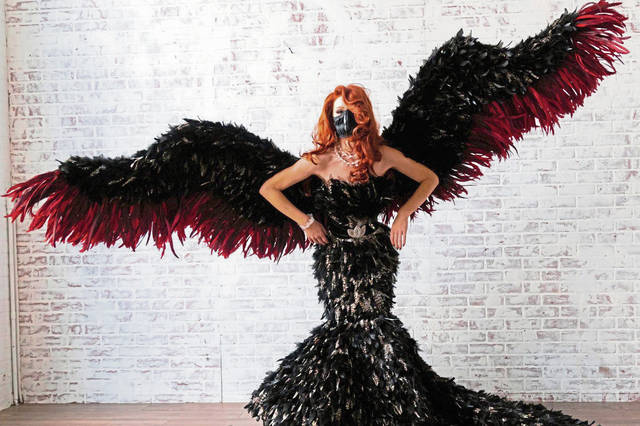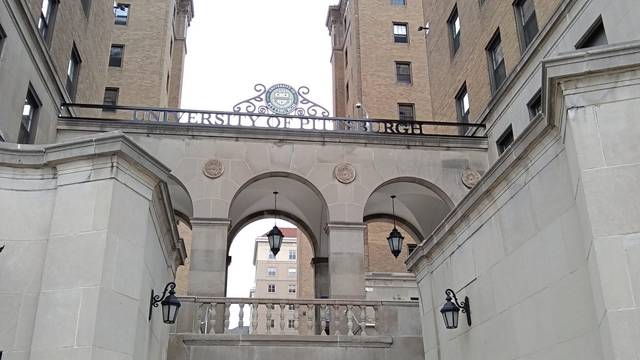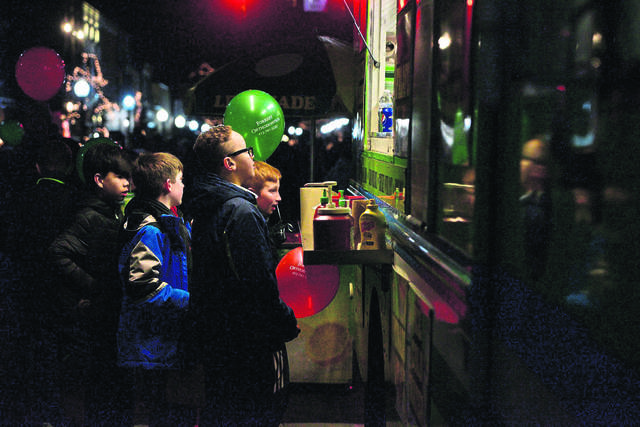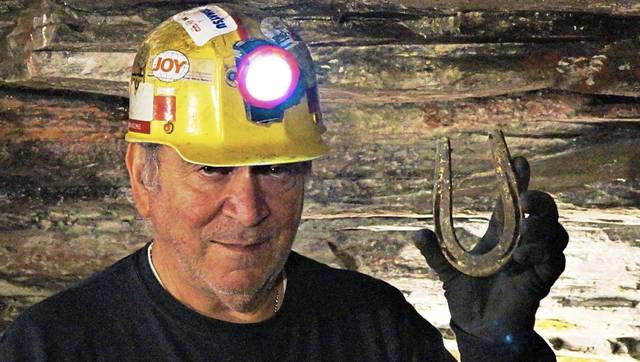Pittsburgh Ballet Theatre teachers, dancers and students hold fast to the old adage — “dance like no one is watching” — through the rocky days of the coronavirus pandemic.
With practice spaces closed and classes canceled, they’ve had to do a bit of improvising to stay on their toes.
Joseph Parr and Diana Yohe, married dancers with Pittsburgh Ballet Theatre, now practice in a shed outside their home in Shaler.
They borrowed three panels of marley board — springy wood used to practice jumps — from the theater and installed two banisters on the walls so they could still work with barres.
Their practice space measures about 12-by-8 feet. As they dance, they can’t help but kick each other from time to time.
“We’re managing,” said Parr, 34.
PBT student Anna Ackerman, 18, of Erie has it just a little better. She recently got access to her hometown ballet studio. She now dances in an empty room, with no one but her own reflection and her instructors on her laptop. Before she got access to the studio, she was practicing in a walk-in closet in her house, making use of the floor-to-ceiling mirrors, using a clothing rack as a barre.
The Pittsburgh Ballet Theatre employs 32 company dancers and last year, the PBT school had more than 300 students enrolled in its intensive summer program and “Company Experience” workshop. Before covid-19 brought widespread closures to public spaces and gatherings in the region, the company was preparing for shows in April, May and June — all were postponed. Enrollment in the virtual renditions of the aforementioned courses is down to 188 students, to maintain the quality of lessons.
In a typical year, roughly 80% of PBT students are from outside of Pittsburgh. The 20 students boarding in the school’s Byham House had to vacate during the shutdown.
Allegheny County moved into the state’s green phase of reopening on June 5 and public spaces are beginning to fill. There is talk of some professional sports being allowed to resume, but a performing art like ballet is still in question.
Katie Drozynski, media relations and content marketing manager for PBT, said school programs are virtual until the end of July. Company dancers, on break during the summer, will return in August. Drozynski said PBT will hopefully have a “robust” safety plan by then to get everyone back in the studio. In-person performances, she said, are still being determined.
Rehearsing and taking classes remotely, dancers have all created makeshift spaces, dancing through the uncertainty and grappling with what covid-19 means for the future of their industry — and their art form.
Dance and adapt
For a dance that is so detail oriented and driven toward perfection, providing instruction through a webcam is challenging. In a typical Zoom class, Marjorie Grundvig and Dennis Marshall, co-directors of PBT School, teach from one window, while a pianist plays in another and students practice in their own spaces.
Grundvig said she’s learned to sift through all of the different squares, zooming in on individual students one-by-one to correct their form. Students, meanwhile, have to be vigilant themselves, policing their own movements independently.
Class lengths are shortened and instruction has become more flexible, the co-directors said, as everyone battles “Zoom burnout.” In the absence of in-person dance instruction, the school also put an added focus on some ancillary studies — ballet terminology, music theory and dance history, among other subjects.
“One thing dance ingrains in you is you have to be adaptable,” said Grundvig.
Grundvig and Marshall have more than 80 years of combined experience in ballet. They met at the North Carolina Dance Theatre and worked together at numerous other ballet companies, including the Tulsa Ballet and the Boston Ballet, before joining the PBT School. (Formerly a married couple, they continue their professional partnership.)
Dancers learning during the pandemic are fostering a completely unique set of skills, they said. Everything about teaching and practicing dance has been altered.
“It’s a whole different way than we’ve grown up (with) or learned,” Marshall said. “It’s a work in progress … but it is difficult teaching, not being in the room with the students.”
With senior managers at PBT, Grundvig and Marshall are imagining what ballet will look like in the near future. They wonder if dancers will have to train and perform wearing masks. They are picturing an outdoor stage, televised performances and drive-in ballets.
“Everyone is creative and no one is willing to give up art,” Grundvig said. “Art is what inspires most people, whether it’s music or paintings or dance. We will survive.”
Dedication remains
Dancing in his shed, Parr echoed the sentiment: Despite chaos and uncertainty, he said, he was still motivated in his training, still dedicated to his craft.
“There are so many ways that human emotions can be expressed through ballet,” he said. “It’s important to keep that art form going.”
Parr has been with the Pittsburgh Ballet Theatre since 2008, and is now preparing for his 13th season. An Ohio native, he started dancing when he was around 7 years old. He stopped after a few years, but revisited ballet when he turned 16.
“Once I started back, I just clung to it,” he said. “It’s just been a part of my life.”
The spring is normally the busiest time of the year, Parr said. While the winter is mostly dedicated to “The Nutcracker” — the highest grossing show for most city ballet companies — dancers rehearse for several shows at once in the spring.
The decision to postpone all PBT shows came March 30. Parr remembers sitting with his colleagues as a group of managers entered the studio and told them all shows were canceled. There had been a “weird vibe” all day long, Parr said, and although he knew the announcement was coming and that it was necessary, he couldn’t help but feel a little angry at the situation. He said it was “deflating.”
“I miss it so much,” Parr said in late May, more than two months after the studio closed. “There wasn’t a day that went by that I didn’t hug 10 or 12 people, and now it’s like I don’t even know if I can shake their hands.”
The memory is still fresh for a lot of the PBT dancers. Ackerman remembers the day, March 14, when she got the email announcing the Pittsburgh Ballet Theatre school would close indefinitely. She absorbed the information; then headed to her last afternoon of in-person classes for three months and counting. Since that day, she has done all of her learning virtually.
The facility where Ackerman now trains in Erie, Sovereign Ballet, is the same place she began practicing ballet when she was 13. Surrounded by the same mirrors as she was five years ago, it’s surreal to be back here, now in a different stage of her career and under very different circumstances.
“I almost couldn’t believe I was back in the space,” she said, though it was a relief to be in a real studio. The first day, she said she danced around the room with glee. “I was just turning and spinning and running around like a crazy person.”
But that relief only goes so far, knowing PBT is still closed. Ackerman began training at PBT last year, and hopes to enroll in the school’s graduate program in the fall. Like legions of young people across the country, her plans for the future now feel uncertain, on pause.
But she is staying positive, focusing more on her “artistry,” the practice of conveying a mood or feeling via dance, rather than perfecting the choreography. She’s taken solace in the routine of daily training, and she’s enjoyed all of the lessons on music theory and history, topics she hadn’t been able to explore as much before.
Parr and Yohe spent the first two or three weeks of quarantine doing their own cardio routine together, but it soon became clear they wouldn’t be returning to the stage any time soon. Parr said he and the other company dancers then pivoted from rehearsing for their planned shows to creating digital content. Like so many others during the lockdown, they were running out the clock, waiting for things to go back to normal.
At this point, the workouts are a reprieve, a chance to let go of stress and grasp at a fleeting sense of normalcy. He said he and Yohe are just “grateful to be moving.”
“All I have to do,” he said, “is think about how close we are to going back on stage.”



